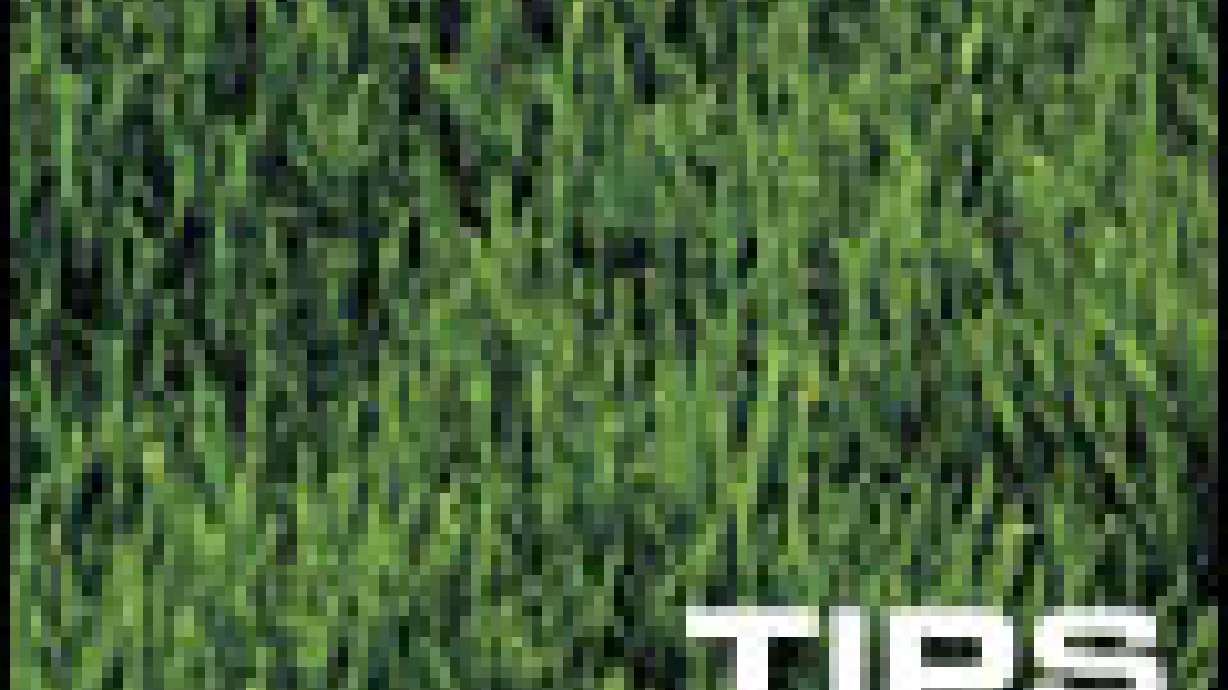Estimated read time: 3-4 minutes
This archived news story is available only for your personal, non-commercial use. Information in the story may be outdated or superseded by additional information. Reading or replaying the story in its archived form does not constitute a republication of the story.
Article provided by the Central Utah Water Conservatory DistrictThinking about tearing out your lawn and going with the rocks and cactus look? Trying to save water by letting your landscape dry out? Water conservation enthusiasts would do well to look beyond the hype and the trendy “zero-scaping” to find ways to live comfortably and compatibly with Utah’s dry climate.
The landscapes around our homes, schools, churches, and businesses do more than just decorate our surroundings; they are a necessary part of our physical environment, much more important than just spots of color and “prettiness.” Plants “breathe” in carbon dioxide and “breathe” out oxygen–a perfect counter balance to animal respiration. Plants of course provide us with food and fuel. And with regards to water, the plants themselves don’t steal our water–they may actually save water in multiple ways.
Everyone knows that shade is cooler than bright sunlight, and most homeowners at least give passing thought to planting some kind of shade tree to the west-north-west, hoping to cut the afternoon summer heat beating down on the house. Grass/turf/lawn also has a cooling effect. The surface of green grass can be 60 degrees cooler than nearby asphalt (any bare-foot child will vouch for that fact) and measurably cooler than concrete or light-colored rock. A swamp cooler can use more than 40 gallons of water per day plus electricity; a central air conditioner uses electricity. And electricity is a product of water-based activities, either hydropower or turbine generators. If your electricity use goes up because you have removed your plants and heated up your yard, you may not be saving any water at all.
So what is the conscientious homeowner/water conserver supposed to do? First, plant what you need where you need it. Who needs grass in corners or on hillsides where no one ever walks except behind a lawn mower? And grass far away from the house won’t help keep the house cool. Think about planting herbs near the kitchen, trees to give shade in hot summer afternoons, grass for kids to play on, and low growing plants to take advantage of the sun’s warmth from the south in the winter.
Second, use plants that are native or adapted to our climate and soil. Once they are established, such plants will need very little (if any) additional water, and they can still cool your home while they provide beauty.
Third, learn to water your landscape properly. Grass doesn’t waste water–people do. Even the thirstiest bluegrass turf needs only about an inch of water per week, or 24 inches in a growing season. Research has shown that the average homeowner puts more than twice that amount on his lawn, and more water on the lawn does not mean a greater cooling effect. More than the lawn needs is simply wasted.
Water conservation is an essential strategy for every day and every year–not just when the annual rainfall is down. Learning to use water efficiently while we keep our homes beautiful and liveable is something all Utahns need to work on. Over-reacting to a drought–even a long one–will prove counter-productive in the end, especially if we return to old bad habits when the rains finally come.









